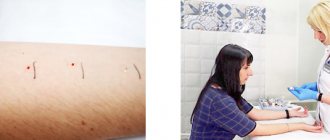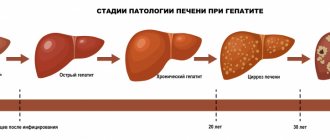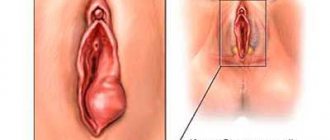Has restrictions during pregnancy
Has restrictions when breastfeeding
Prohibited for children
Has restrictions for older people
Has limitations for liver problems
Has limitations for kidney problems
Relief suppositories are indicated for the treatment of internal forms of hemorrhoids. There are several types of Relief suppositories, differing from each other, but all of them are designed to improve the condition of the final part of the digestive tract (the mucous membrane of the rectum), relieve constipation, and are also used to prevent various diseases. Suppositories can be combined with liniments, using them in one therapeutic complex.
How to use Relief ointment
Before use, hygiene procedures must be carried out.
The product can be used rectally and externally. Children over 12 years of age and adults can use Relief 4 times a day.
The ointment is applied rectally using an applicator. When used externally, the cream treats damaged areas of the anus. After each use, wash the applicator thoroughly and close it with the cap.
Use until symptoms disappear completely. Do not use the medicine if the protective cap is damaged or missing.
Types of suppositories
Today, pharmacies offer 4 types of relief suppositories. When choosing a remedy, you should take into account the symptoms of the disease. It should be understood that successful treatment of hemorrhoids is only possible with an individual approach.
The most commonly prescribed treatment for internal hemorrhoids is classic relief. The components in its composition allow you to quickly stop bleeding and swelling. The main active substance in the classic drug is phenylephrine hydrochloride. It refers to adrenergic stimulants. The component has a local vasoconstrictor effect and improves blood circulation in hemorrhoids. Against this background, the release of exudate decreases and swelling is relieved. Thanks to the cocoa butter content, it has a pronounced softening effect. Due to its mild effect, classic relief is indicated for preventive purposes to prevent exacerbation of the disease. The drug has minimal side effects and can be used for a long time.
Other types of medicinal suppositories:
- Relief Advance. This remedy has a strong analgesic effect. The main active ingredient in the drug is benzocaine, which is a strong anesthetic. Suppositories are recommended for use in the acute stage of the disease, strangulation of the node, as well as after operations or during painful diagnostic procedures. The drug has a number of serious contraindications and can cause negative reactions in the body, so it should only be used if recommended by a doctor.
- Relief Ultra. The active ingredients in the product are zinc sulfate and hydrocortisone acetate. This combination provides a strong anti-inflammatory effect and allows you to quickly relieve itching. The product is an emergency aid for anal fissures. In the postoperative period, suppositories help prevent the development of the inflammatory process. It is allowed to use the product in short courses - up to 7 days. It is important to exclude the presence of contraindications before use.
- Relief Pro. The drug contains fluocortolone pivalate. This substance blocks the production of inflammatory mediators. The pronounced analgesic effect of suppositories is provided by lidocaine. The product is recommended for chronic pathologies that are accompanied by constant pain and inflammation. Due to the large number of side effects, the drug can only be used if indicated and recommended by a doctor.
How to use Relief candles
Before using candles, it is necessary to carry out hygiene procedures.
It is necessary to enter 1 piece. up to 4 times a day (including before bedtime).
Suppositories are best administered in the morning, at night and after each bowel movement. The therapeutic course lasts on average 1-2 weeks.
With regular use, you can achieve a lasting therapeutic result and eliminate the symptoms of the disease.
Do not use the product if the protective coating is damaged or lost.
Therapy rules
You must wash your hands before use. Suppositories are administered rectally after completion of the hygiene procedure, no more than three times a day. Before use, the candle should be heated in your hand until softened. This will help to painlessly insert it into the anus. The course of therapy lasts one to two weeks.
Clinical studies have shown good tolerance of the drug by patients. However, rare cases are characterized by adverse reactions caused by the action of phenylephrine hydrochloride. Adverse reactions are expressed by the following symptoms:
Reflex bradycardia.- Hyperthyroidism.
- Local allergic reactions.
- Contact dermatitis.
- Dizziness, increased excitability of the nervous system, involuntary trembling of the fingers, a feeling of unreasonable fear.
Preservatives - methyl and propyl ether can provoke delayed allergic reactions and bronchospasm.
Concomitant use with antihypertensive drugs is prohibited. The opposite threatens severe hypertension. Atropine sulfate causes vasoconstriction, beta-blockers lead to arterial hypertension. Thyroid hormone medications lead to cardiac conduction disturbances.
Simultaneous use with drugs that excite the nervous system can lead to convulsions, increased nervousness, irritability, and insomnia. Monoamine oxidase inhibitors reduce the effect of phenylephrine.
Comparison of drugs:
Is it possible to use Actovegin and Curantil together and which one is better?
Contraindications and adverse reactions
You should avoid using Relief in case of hypersensitivity to its constituent elements. The drug is also contraindicated for thromboembolism and granulocytopenia. Take with extreme caution if you have high blood sugar levels, hypertension, hyperthyroidism, heart and vascular diseases, or hepatitis.
In rare cases, taking the drug may cause unwanted reactions such as allergies.
The central nervous system may manifest itself as nervousness, anxiety, sleep disturbance, and headache.
From the cardiovascular system, increased blood pressure and abnormal heartbeat may be observed.
A burning sensation, itching, and swelling may occur at the application site.
No cases of overdose have been identified.
Which Relief® should you choose?
Suppositories and ointments, in which the active ingredient is phenylephrine, are used by specialists to treat internal and external hemorrhoids, which are accompanied by bleeding and itching.
In the presence of severe pain and burning, both forms of the drug Relief Advance are used (rectal suppositories and ointment).
Which Relief is better for hemorrhoids accompanied by anal itching, eczema and dermatitis of the perianal area? In this case, you should choose anti-inflammatory rectal suppositories Relief Ultra.
How to use Relief ointment in cosmetology
It is worth saying that in addition to the indications indicated in the instructions, Relief is often used in cosmetology as an ointment.
Since the ingredients are beeswax, corn oil and shark oil, many women and men have already appreciated the effectiveness of the anti-wrinkle product. The ointment can also remove bags and dark circles under the eyes, smooth the skin and nourish it with nutrients. The cream should be applied in a thin layer, avoiding contact with the eyes.
Despite such results in the field of cosmetology, doctors categorically refuse to confirm the feasibility and necessity of such inappropriate use.
The difference between Relief® drugs
Let's take a closer look at how the candles in the Relief line differ from each other. The following rectal suppositories of this line are produced:
- Relief, the active ingredient of which is phenylephrine, which has a vasoconstrictor effect, which reduces swelling, itching and bleeding.
- Relief Advance is a local anesthetic used to treat local pain syndrome.
- Relief Ultra, the active ingredient in which is hydrocortisone acetate, an anti-inflammatory component used to treat itching and eczema of the anorectal area, and zinc sulfate, which is used to accelerate healing.
Now let's figure out what Relief ointments are. The manufacturer produces two types of the drug in this dosage form. The difference between them, as with rectal suppositories, lies in the composition and therapeutic effect.
There are such types of Relief ointments on sale as Relief ointment with phenylephrine, which has an anti-edematous and hemostatic effect. And also Relief Advance ointment, with benzocaine, which has an analgesic effect. Each of them has its own area of application.
special instructions
If bleeding is observed while using the medicine, the course of treatment should be completed immediately. It is also worth refusing further use if the condition worsens, or if there is no visible result after 5-7 days from the start of using the product.
The drug can be stored for 24 months. It should be kept in a dry and dark place at room temperature away from children.
You should not use Relief in parallel with antihypertensive drugs and antidepressants.
The medicine does not affect the ability to drive vehicles and other mechanisms that require increased concentration.
Peculiarities
Relief suppositories, reviews of which indicate their high effectiveness, belong to the group of drugs used to treat hemorrhoids. Today they are represented by several types of suppositories. Suppositories differ in composition, but all have a pronounced anti-inflammatory, healing and analgesic effect. This allows you to quickly relieve unpleasant symptoms of the disease.
Relief candles are produced in a torpedo shape, which simplifies their use. Suppositories may be white or have a slightly yellowish tint. Since different drugs contain different basic and additional substances, this makes it possible to ensure the effectiveness of the drug in different cases.
Conservative treatment of hemorrhoids: experience with the use of Relief drugs
Hemorrhoids are a disease of external and internal hemorrhoids. Combined hemorrhoids are prolapse of internal hemorrhoids and external hemorrhoids at the same time. In chronic hemorrhoids, the main symptoms are bleeding and prolapse of hemorrhoids from the anal canal [1]. Hemorrhoids, like many diseases, have a wave-like character: a chronic course is replaced by exacerbation. Acute hemorrhoids are, first of all, thrombosis of hemorrhoids or bleeding hemorrhoids, complicated by anemia. Thrombosis of nodes can quickly, within 24 hours, be accompanied by an inflammatory process. Acute hemorrhoids are divided into three degrees: 1) thrombosis of hemorrhoids without inflammation; 2) thrombosis with inflammation in the node itself; 3) spread of the inflammatory process to the surrounding tissue. Often bleeding hemorrhoids are complicated by chronic anemia, less often - in 4-5% of cases - by acute anemia. The chronic course of hemorrhoids is divided into 4 stages. Stage I is characterized only by the discharge of scarlet blood from the anal canal during defecation without prolapse of the nodes. Stage II is characterized by prolapse of hemorrhoids with their independent reduction into the anal canal (with or without bleeding). At stage III, periodic loss of nodes requires their manual reduction into the anal canal (with or without bleeding). Stage IV is characterized by constant prolapse of hemorrhoids, sometimes together with the mucous membrane of the anal canal (with or without bleeding). Indications for drug treatment: 1) acute hemorrhoids; 2) chronic hemorrhoids of early stages; 3) perioperative period; 4) prevention of hemorrhoids [2]. Drug treatment of acute and chronic hemorrhoids consists of general and local use of analgesics, phlebotonics, anti-inflammatory, hemostatic and local combination drugs [3].
The place of conservative therapy in the treatment of hemorrhoids
Conservative treatment of hemorrhoids is based on a combination of systemic and topical medications. The leading place in systemic therapy is occupied by phlebotonic drugs, especially micronized diosmin with a hesperidin fraction. To eliminate thrombosis of hemorrhoids, pentoxifylline, acetylsalicylic acid and, of course, combined phlebotonic drugs are also taken in the form of systemic drugs. Drugs from the benzopyrone group also improve blood flow in hemorrhoids. The use of local drugs helps reduce pain and inflammatory syndromes, enhances the effect of systemic painkillers and phlebotonics, which reduces rehabilitation time. In the acute period, a 7–10-day course of treatment with local drugs is sufficient, and in the chronic course, as a preventive measure, the course can be continued for up to 1.5–2 months. Pathogenetically based pharmacotherapy solves a number of problems: 1) elimination of inflammation; 2) pain relief; 3) elimination of thrombosis of hemorrhoids; 4) stopping bleeding. To eliminate inflammation, non-steroidal anti-inflammatory drugs (NSAIDs), systemic enzyme therapy, various ointment forms containing NSAIDs, as well as phlebotonics are used. The anti-inflammatory effect of NSAIDs is ensured by inhibition of the biosynthesis of prostaglandins, which are important in the pathogenesis of inflammation and pain [4]. In acute thrombosis of hemorrhoids, topical combination drugs are more often used to relieve inflammation, such as tribenosine with lidocaine, a combination drug containing bufexamak, bismuth subgallate, titanium dioxide, lidocaine hydrochloride. These drugs have a venotonic and anti-inflammatory effect. They improve vascular tone, reduce venous congestion in the cavernous bodies, and improve microcirculation. Their anti-inflammatory effect is explained by the inhibition of endogenous substances that play the role of mediators in the development of inflammation. Lidocaine hydrochloride in the gel substrate has a rapid and long-lasting analgesic effect. To relieve pain in acute hemorrhoids, non-narcotic analgesics (antipyretics based on metamizole), paracetamol derivatives, as well as NSAIDs in the form of systemic and local therapy are usually used. The combination of topical drugs and NSAIDs has a pronounced anti-inflammatory and analgesic effect. For pain associated with acute anal fissure, complicating the course of hemorrhoids, antispasmodic drugs are effective, as well as derivatives of nitroglycerin and nifedipine on a special ointment base for topical use, which have an antispasmodic effect on the internal sphincter. To treat thrombosis in hemorrhoids, heparin-containing ointments and gels are used. The use of heparin-containing drugs promotes the regression of thrombosed hemorrhoids, reducing swelling and hyperemia of the skin, and the inflammatory reaction. Combination preparations containing sodium heparin, polidocanol, dexpanthenol and hydrocortisone are more effective. Heparin binds plasma coagulation and inhibits hemostasis, polidocanol provides an analgesic effect, dexpanthenol stimulates repair processes, and hydrocortisone has an anti-inflammatory effect. With acute bleeding hemorrhoids, chronic or acute anemia may develop, the severity of which depends on the activity of bleeding, its frequency, and the amount of blood loss. For systemic therapy for bleeding from hemorrhoids, a fairly effective drug, tranexamic acid, an activator of thromboplastin formation, sodium ethamsylate, and a heparin antidote, protamine sulfate, are used. The variety of forms and stages of hemorrhoids during its drug treatment requires an individual approach. For hemorrhoidal bleeding, local medications are mainly used. Of these, the α-adrenomimetic phenylephrine is quite effective, as well as sodium alginate, which reduces the polymerization time of fibrin monomer at the final stage of blood coagulation. In case of severe bleeding, collagen hemostatic sponges consisting of fibrinogen and thrombin are used for local treatment. After insertion into the anal canal, the hemostatic sponge dissolves and forms a fibrin film that blocks the bleeding areas of the hemorrhoids. To date, a local remedy, Relief, has been proposed for the treatment of various forms of hemorrhoids, represented by five drugs with different mechanisms of action [5]. They have analgesic, hemostatic, and pronounced anti-inflammatory properties, which are characteristic of certain forms of the Relief line of drugs. The different composition and, accordingly, the different predominant effect of each drug make it possible to take into account the clinical form, stage, and certain symptoms of hemorrhoids, which provides an individual approach to therapy. The drug Relief eliminates bleeding due to phenylephrine, which has a vasoconstrictor, decongestant, and antipruritic effect; The speed of the effect is ensured by the cocoa butter included in the base, which easily melts when the suppository is introduced. Relief suppositories are prescribed for the treatment of internal hemorrhoids with a predominance of edema and bleeding. Relief ointment contains natural corn and thyme oils in its base and is used to treat primarily external hemorrhoids. Relief Advance is a drug containing benzocaine that has a local effect, with minimal risk of side effects, and is indicated for the treatment of hemorrhoids with severe pain, as well as for use after proctological operations. Suppositories are used primarily for the treatment of internal hemorrhoids, ointment - for the treatment of external hemorrhoids. Relief Advance contains benzocaine, a local anesthetic that is safe because, due to its chemical structure, it has virtually no systemic effects. Relief Ultra is a drug with an anti-inflammatory effect, with a minimal risk of side effects, indicated for the treatment of exacerbations of hemorrhoids and other diseases of the anorectal area (fissures, erosion of the anus, proctitis, anal itching, eczema, dermatitis of the perianal area). A distinctive feature of the drug Relief Ultra is the presence of hydrocortisone in its composition, 10 mg in one suppository. Hydrocortisone acetate, which is part of Relief Ultra, has anti-inflammatory, desensitizing, antiallergic, vasoconstrictor and antipruritic effects. In the local treatment of acute hemorrhoids, hydrocortisone inhibits the release of important inflammatory mediators. The second component of the unique combination of Relief Ultra suppositories is zinc sulfate, which promotes the healing of wounds and erosions. Taken together, this provides a combined local effect of the Relief Ultra drug, and the base of the suppositories - cocoa butter - promotes rapid melting of the suppositories in the anal canal, which is especially important during the inflammatory process. In a randomized study in 60 patients with pathology of the anorectal region, the effectiveness of Relief ointment was studied [6]. The patients were divided into 2 equal groups (n=30), main and control. Each of them included 15 patients suffering from mixed hemorrhoids, and 15 patients after surgical interventions. After treatment with Relief ointment in the main group, 14 out of 15 patients with hemorrhoids (93%) noted a marked improvement in their general condition due to a decrease in pain and itching. All 15 patients in this group who underwent hemorrhoidectomy showed a significant reduction in swelling, itching and hyperemia, rapid cleansing of the wound from purulent-fibrinous contents, and easier defecation. Primary granulation and epithelialization appeared in the study group, on average, 2–3 days earlier than in the control group. The drug did not cause any allergic or toxic reactions and can be recommended for the treatment of hemorrhoids. The effectiveness of Relief Advance hemorrhoidal suppositories in patients with chronic hemorrhoids on an outpatient basis was demonstrated in a study by V.V. Darwin et al. [7]. The results of conservative treatment of 30 patients with chronic hemorrhoids who were undergoing outpatient treatment showed the effectiveness of Relief Advance suppositories. An excellent result on the 7th day was obtained in 46.7% of patients, on the 14th day – in 70%, on the 21st day – in 82.8%. The drug is especially effective in patients with stages I–II of the disease. A lesser effect of Relief Advance suppositories was noted when used in patients with stage III chronic hemorrhoids. In this case, Relief Advance can be a means of preparation for surgery, and also be included in the postoperative treatment program [7]. A.V. Sparrow et al. [8] studied the clinical effect of using rectal suppositories Relief, Relief Advance, Relief Ultra, and Relief Advance ointment in 32 proctological patients with various diseases of the anorectal area, as well as in the postoperative period. The control group consisted of 11 people who were not prescribed Relief group drugs. It was noted that the combination of Relief Advance suppositories and Relief Advance ointment turned out to be the most effective. The next in terms of analgesic effect were Relief Ultra suppositories, and Relief suppositories showed somewhat worse, although quite good results (Fig. 1).
Along with a decrease in pain, patients in the main group showed a more rapid decrease in swelling in the operation area, a decrease in the frequency of postoperative bleeding and accelerated wound healing. All operated patients were discharged at the end of the study after an average of 9±2 days. It is worth noting the good therapeutic effect as part of complex therapy of Relief Ultra suppositories containing hydrocortisone, and for such difficult-to-treat pathology as anal itching [8]. A study of the clinical effect of suppositories and Relief ointment in the treatment of inflammatory-vascular processes accompanied by pain and itching, in the treatment of cryptitis, papillitis, anal fissures, acute and chronic forms of hemorrhoids was presented in a study by T.V. Abuladze, which included 30 patients [9]. When using both forms of the drug, the analgesic effect occurred quickly and lasted up to 2–4 hours. The pain syndrome was relieved in 23 cases (77%), of which in patients with acute hemorrhoidal thrombosis - in 5 out of 5 (100%), chronic hemorrhoids - in 12 out of 14 (85.7%), with anal fissures - in 5 out of 5 (100% of cases). With repeated 6-day use, the effect was positive in all cases. The swelling subsided, the hemorrhoids decreased in size, and the pain was relieved. Thus, the treatment of both chronic and acute processes in the anal canal with Relief drugs gave a positive result. In an open study conducted at the coloproctology center of St. Petersburg, Relief Ultra suppositories were used in 35 patients with stage I–II hemorrhoids and in 23 patients with acute thrombosis of hemorrhoids. Relief Advance ointment was prescribed to 41 patients after various proctological operations. The control group included 70 patients who received traditional treatment (heparin ointment, syntomycin, levomekol). An excellent treatment result was achieved in 80% of patients - there was no pain and dysuric disorders, and the phenomena of hemorrhoidal vein thrombosis and inflammation quickly stopped. 17% of patients had a good treatment result, which consisted of an effective effect of the drug on the processes of healing and inflammation, while maintaining pain, for the relief of which analgesics were used. In 3% of patients, the drug was discontinued due to the development of intolerance (itching, hyperthermia) [10]. It is important to know that the majority of patients with hemorrhoids have irritable bowel syndrome, most often in the form of constipation, so such patients are required to undergo targeted treatment. It consists in the use of hydrophilic colloids, enzyme preparations, eubiotics and prokinetics. Treatment of irritable bowel syndrome is a prerequisite for the effectiveness of prevention and successful treatment of any form of hemorrhoids. After removing the inflammatory process, it is necessary to carry out treatment that improves the reparative properties of tissues. Deproteinized hemoderivative of calf blood, containing derivatives of nucleic acids and low-molecular peptides, improves the course of energy-dependent metabolic processes in the body. The drug improves the body's supply of oxygen and glucose, stimulates the activity of oxidative phosphorylation enzymes and improves microcirculation in tissues. An ointment containing microbial cells of Escherichia coli killed by phenol also has a local reparative effect. Its action is based on increasing local tissue resistance to the effects of pathogenic microflora. This process occurs with the help of cell wall antigens and metabolic products of Escherichia coli upon contact with the rectal mucosa and perianal skin. The drug stimulates the T-lymphocyte system of intestinal immunity, increases the phagocytic activity of leukocytes and cells of the reticuloendothelial system, normalizes the tone of blood vessels and stimulates the regeneration of damaged tissues. Pharmacoprophylaxis of hemorrhoids is necessary in risk groups: patients with constipation, leading a sedentary lifestyle, as well as pregnant women. In some cases, including during pregnancy, it is necessary to prescribe phlebotropic drugs. The question of their use during pregnancy and the postpartum period is decided individually. In addition, during pregnancy and the postpartum period, Relief can be used topically in case of bleeding from the anus or itching. For hemorrhoids with severe pain, it is advisable to prescribe Relief Advance in the form of suppositories or ointments. These drugs are approved for use in women of any stage of pregnancy. In a study by N.V. Knyazeva and S.N. Pernakova [11] on 110 patients showed that the drug Relief is an effective treatment for hemorrhoids and other diseases of the anorectal area in postpartum women in the late postpartum period. A positive result with the use of the drug Relief was achieved in 87.5% of patients: tissue swelling, itching in the perineum, discomfort, and bleeding disappeared. Elimination of itching and discomfort was observed within 5 minutes from the moment of introduction of the Relief suppository into the rectum. The authors conclude that the study drug in a dose of 1 suppository 2–4 times a day for 7–10 days is well tolerated by patients and rarely causes side effects.
Contraindications
First of all, systemic and local drugs intended for the treatment of hemorrhoids are contraindicated if there is a history of allergic reactions and intolerance to these drugs or their components. A relative contraindication to the use of heparin-containing agents is blood clotting disorders. In the first trimester of pregnancy, NSAIDs and glucocorticoids, both in systemic therapy and for local use, as well as systemic drugs for the treatment of hemorrhoids, are generally contraindicated. In the II–III trimester, postpartum period, and during breastfeeding, limited systemic and local use of drugs is possible, taking into account the risk-benefit ratio. Combined pharmacotherapy for acute or chronic hemorrhoids is accompanied by a long-term positive effect, but the resumption of constipation and a violation of the diet can again cause an exacerbation. Therefore, it is necessary to carry out the prevention of hemorrhoids in the form of 1.5–2 month courses 2 times a year, using small doses of combined phlebotonic drugs. Thus, the choice of method of conservative treatment of hemorrhoids depends on the severity of symptoms, and the simultaneous use of systemic and local treatment can quite effectively stop acute processes, reduce the number of exacerbations and prevent their development.
Effects of rectal suppositories
Anesthesia
Reduce pain due to analgesic components (novocaine, lidocaine, etc.). Anesthetic suppositories for hemorrhoids are prescribed for acute pain.
Reduce blood clot formation
Achieved through anticoagulants, which block blood clotting mechanisms. After taking such suppositories, blood stops clotting normally, so patients with a tendency to bleed are advised to first consult a doctor.
Anti-inflammatory effect
You can relieve inflammation with the help of non-steroidal anti-inflammatory drugs (aspirin, diclofenac), as well as hormonal drugs (drugs containing glucocorticosteroids). Natural substances (sea buckthorn oil, propolis) are also widely used.
Stop bleeding
In this case, drugs that are opposite in action to anticoagulants are used. That is, they activate the blood clotting process, stop bleeding, but can lead to the formation of blood clots if used uncontrolled.
Strengthening veins
Achieved by increasing their tone, strengthening the wall, and increasing elasticity.
In order to increase the effectiveness of suppositories for hemorrhoids and ensure ease of use, they sometimes include several active ingredients. For example, suppositories with analgesic, anti-inflammatory and hemostatic effects are popular.










